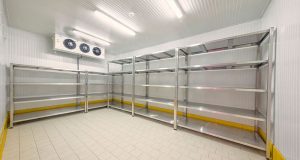Energy-Efficient Cold Storage Design: Best Practices for Sustainable Operations
Cold storage facilities are vital for preserving perishable goods across various industries, including food, pharmaceuticals, and biotechnology. However, they are also among the most energy-intensive operations. Optimizing energy efficiency in these facilities not only reduces operational costs but also contributes to sustainability goals. This article explores best practices for designing energy-efficient cold storage facilities, focusing on insulation, refrigeration systems, lighting, and renewable energy integration.
1. Insulation and Building Envelope: Minimizing Heat Gain and Loss
High-Performance Insulation Materials
The foundation of an energy-efficient cold storage facility lies in its insulation. High-quality insulation materials, such as polyurethane (PUR), polyisocyanurate (PIR), and expanded polystyrene (EPS) panels, offer excellent thermal resistance, reducing heat transfer and minimizing energy consumption. These materials help maintain stable internal temperatures, reducing the load on refrigeration systems and enhancing overall energy efficiency.

Sealing and Air Tightness
Proper sealing of doors, windows, and other openings is crucial to prevent air leaks, which can lead to significant energy losses. Utilizing high-quality seals and regularly inspecting them for wear and tear ensures that the cold storage facility maintains its desired temperature with minimal energy expenditure.
2. Refrigeration Systems: Enhancing Efficiency and Performance
Optimized Refrigeration Equipment
Selecting energy-efficient refrigeration units is essential for reducing energy consumption. Modern systems with variable speed drives and advanced controls can adjust cooling output based on real-time demand, leading to significant energy savings. Regular maintenance, including cleaning coils and replacing worn components, ensures that refrigeration systems operate at peak efficiency.
Heat Recovery Systems
Implementing heat recovery systems allows for the capture and reuse of waste heat generated by refrigeration units. This recovered heat can be utilized for space heating or water heating, reducing the need for additional energy sources and enhancing the overall energy efficiency of the facility.
3. Lighting and HVAC: Supporting Energy Efficiency
Energy-Efficient Lighting
Replacing traditional lighting with energy-efficient LED fixtures reduces electricity consumption and minimizes heat generation within the cold storage facility. Incorporating motion sensors and timers ensures that lighting is only active when necessary, further conserving energy.
Optimized HVAC Systems
Heating, ventilation, and air conditioning (HVAC) systems should be designed to complement the refrigeration system, maintaining optimal air quality without compromising energy efficiency. Utilizing energy recovery ventilators and demand-controlled ventilation can reduce the energy required for HVAC operations.
4. Renewable Energy Integration: Reducing Carbon Footprint
Solar Power Systems
Integrating solar panels into the cold storage facility’s design allows for the generation of renewable energy on-site. This reduces reliance on grid electricity, lowers operational costs, and contributes to sustainability goals. While the initial investment may be substantial, the long-term savings and environmental benefits make solar power a viable option for many facilities.
Wind Energy Solutions
In areas with consistent wind patterns, installing wind turbines can supplement the facility’s energy needs. Wind energy systems can provide a reliable and renewable power source, further reducing the facility’s carbon footprint and operational costs.
5. Advanced Technologies and Automation: Enhancing Operational Efficiency
Building Energy Management Systems (BEMS)
Implementing a BEMS allows for real-time monitoring and control of energy usage across the cold storage facility. These systems can identify inefficiencies, optimize energy consumption, and provide data for continuous improvement.
Automation and Smart Controls
Incorporating automation technologies, such as smart thermostats and automated lighting systems, ensures that energy is used efficiently throughout the facility. These systems can adjust settings based on occupancy and environmental conditions, reducing energy waste and improving overall efficiency.
6. Compliance with Standards and Regulations
ASHRAE Standards
Adhering to the American Society of Heating, Refrigerating and Air-Conditioning Engineers (ASHRAE) standards ensures that cold storage facilities meet industry benchmarks for energy efficiency and performance. ASHRAE Standard 90.1, for example, provides guidelines for energy-efficient building design, including requirements for insulation, lighting, and HVAC systems.
LEED Certification
Pursuing Leadership in Energy and Environmental Design (LEED) certification demonstrates a commitment to sustainability and energy efficiency. Cold storage facilities can achieve LEED certification by meeting specific criteria related to energy performance, water efficiency, and indoor environmental quality.
Conclusion
Designing energy-efficient cold storage facilities is essential for reducing operational costs, enhancing sustainability, and ensuring compliance with industry standards. By focusing on high-performance insulation, optimized refrigeration systems, energy-efficient lighting and HVAC, renewable energy integration, advanced technologies, and adherence to standards, facilities can achieve significant energy savings without compromising product quality or safety.

Recent Comments